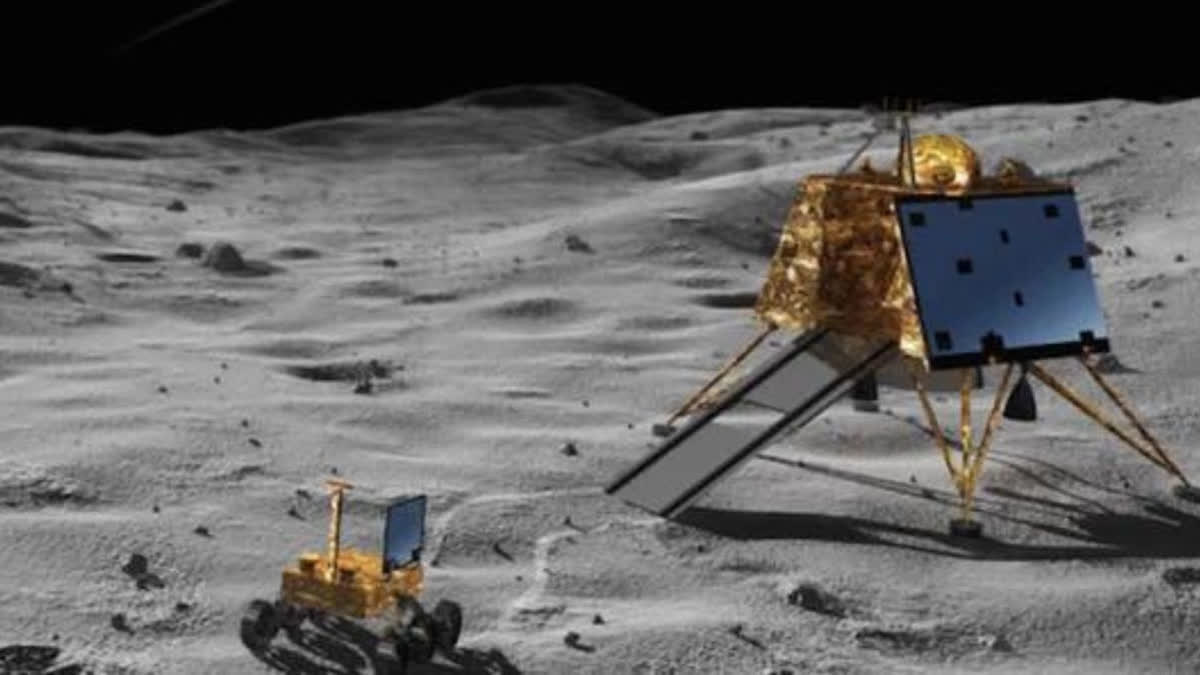Hyderabad: Ouyang Ziyuan, a prominent Chinese scientist, hailed for China's lunar exploration endeavours, has raised concerns regarding the portrayal of ISRO's (Indian Space Research Organisation) landmark achievement in lunar landing. Chandrayaan-3, which commenced its journey from Sriharikota on July 14, made a soft landing on the Moon's surface on August 23.
On Wednesday, Chinese cosmochemist Ouyang Ziyuan asserted that it is inaccurate to declare that the spacecraft had landed near the lunar south pole. While talking to Science Times newspaper, Ouyang, a member of the Chinese Academy of Sciences, said, "The landing site of the Chandrayaan 3 was not at the moon's south pole, not even in the polar region of lunar's south pole, and neither it was near the Antarctic polar region."
The crux of Ouyang's argument lies around the landing site's geographical coordinates, emphasising that the spot at 69 degrees south latitude cannot be deemed as near the lunar south pole. He clarified that the lunar south pole is accurately defined between 88.5 and 90 degrees, which he marked as a significant discrepancy from Chandrayaan-3's landing location.
Ouyang emphasised that Chandrayaan-3's landing site was situated 619 kilometers away from the polar region. He stated the claim of lunar landing at the south pole is just 'wrong'.
Also read: ISRO transition was difficult, came not without hiccups, says chairman Somanath
The Chinese publication also quoted Richard de Grijs, a professor at Macquarie University’s School of Mathematical and Physical Sciences in Sydney, who said that Chandrayaan-3 had landed in a region outside the lunar south pole.
In the United States, NASA refer to the “entire” polar region as being from 80 to 90 degrees south. Under that definition, the Chandrayaan-3 landed outside the polar region but at a higher latitude than has been achieved by previous moon missions. Bill Nelson, NASA chief, earlier posted a message on X, congratulating the ISRO on their successful “lunar south pole landing” on August 23.
Ouyang was joined by other Chinese scientists too in the questioning of India's space exploration capabilites. Pang Zhihao, a Beijing-based space expert, previously highlighted China's advancements in space exploration, including the capability to send orbiters and landers directly into the Earth-Moon transfer orbit, a feat beyond India's reach due to its launch vehicle capacity limitations.
Also read: Chandrayaan-3 Mission: No signals received from Vikram lander and Pragyan rover, says ISRO
Pang also emphasised the superior technology in China's lunar missions, particularly the advanced engine and larger lunar rover, comparing it to India's Pragyan rover with its limitations, such as a one-lunar-day lifespan and inability to endure lunar nights. China's Yutu-2 rover, on the other hand, holds the record for the longest operational time on the lunar surface due to its nuclear-powered capabilities.
However, it is commendable that despite China's technological prowess, India achieved a remarkable feat by venturing farther than any other spacecraft, including those of Russia, the United States, and China itself.
Russia's recent lunar mission, Luna-25, intended to reach the Moon before Chandrayaan-3, ended in a crash on August 19, leaving a sizable crater on the lunar surface. Both China's mission, which touched down at 45 degrees south in 2019, and the US Surveyor 7, which landed at about 41 degrees south in 1968, reflect the global interest in exploring the lunar south pole.
Also read: Pragyan rover has done what it was expected to do: ISRO chief



